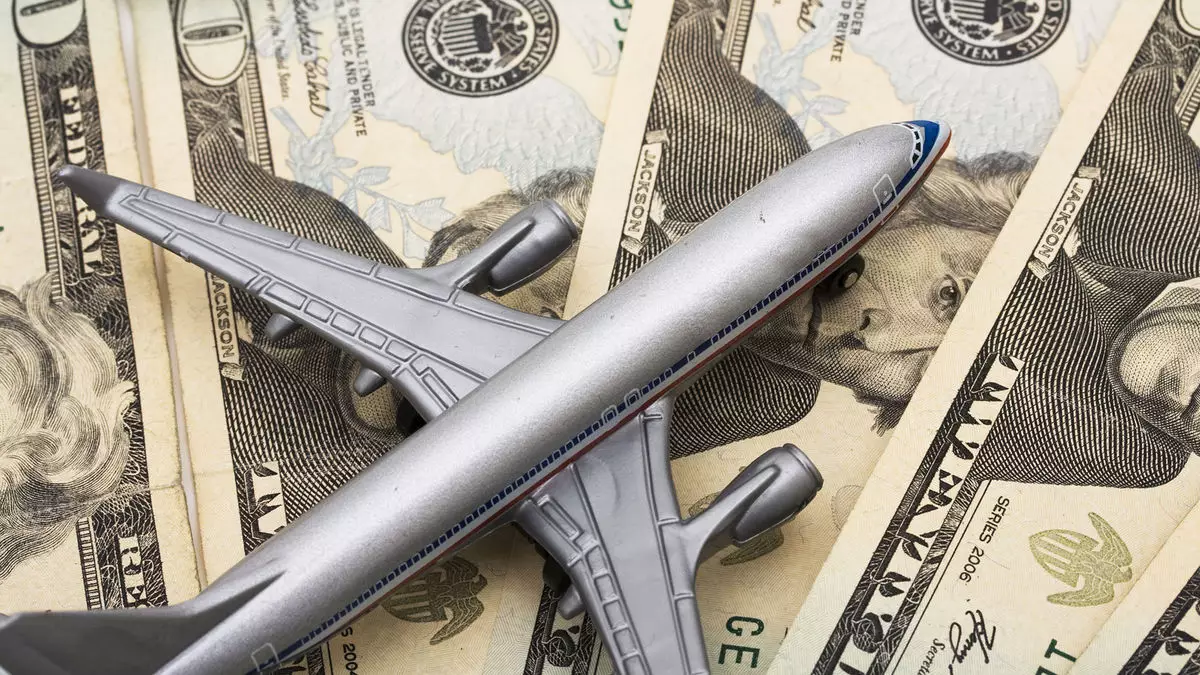The aviation sector is facing turbulence unlike any seen in recent history, and it’s not merely about the soaring airfare prices from a few years ago. The introduction of President Trump’s sweeping global tariffs is casting a considerable shadow over an industry already grappling with an unstable economy. According to insights from TD Cowen investment analyst Tom Fitzgerald, these tariffs may further inhibit consumer demand, just when the airlines thought they were on the mend. The current climate of economic uncertainty, coupled with declining stock market performance, creates a perfect storm, especially impacting the business travel sector, which has been notably weak.
The airline industry’s struggles are compounded by consumer behavior shifts, particularly among baby boomers who traditionally sustain business travel. Fitzgerald’s observations suggest that as investor confidence dwindles, so too does discretionary spending, creating a ripple effect on travel habits. With ongoing global trade policy uncertainties, the likelihood of a recession is increasing, which can have dire consequences for the already beleaguered airlines.
A Closer Look at Airline Performance
Evidence of anxiety within the airline stock market is stark. The Jets ETF fund, which represents a composite of U.S. airline stocks, has plummeted approximately 33% since its peak on inauguration day, recently taking a hard hit with a more than 4% decline on April 4. Following such downturns, numerous airlines adjusted their earnings guidance downward in early March, attributing the revisions to a trifecta of factors: declining consumer confidence, widespread federal job cuts, and the aftermath of tragic incidents like the January 29 plane crash near Washington, D.C., which further tarnished public confidence in air travel.
As airlines prepare for their Q1 earnings calls, beginning with Delta on April 9, a wave of anticipated downgrades in financial forecasts looms. This aligns with Fitzgerald’s concerns, suggesting that such revisions will only intensify as the landscape evolves. Key indicators point to a grim outlook, with Fitzgerald forecasting a world characterized by slower growth and higher inflation, while also facing a more isolationist U.S. stance.
Demand Dynamics and Pricing Strategies
Yet, amid these challenges lies a sliver of potential good news for consumers. For those undeterred by the economic climate, the reduction in demand could lead to unexpectedly cheaper airfares. Fitzgerald posits that the rapid decline in air travel demand has resulted in a surplus of domestic flight capacities set to extend into 2025, which means airlines might aggressively reduce prices to lure back customers. This competitive atmosphere could benefit travelers seeking value, although it may not triumph over the broader concerns swirling in the market.
Airlines will inevitably need to recalibrate their operational strategies to keep pace with changing consumer habits and minimize excess capacity. However, Fitzgerald suggests that significant adjustments won’t materialize until the latter half of the year, indicating a prolonged period of uncertainty. Interestingly, within this evolving market, full-service U.S. carriers may present a more favorable position relative to low-cost airlines. While budget-conscious travelers tend to seek the lowest available fares, Fitzgerald anticipates that many will opt for low-end products from full-service carriers rather than moving entirely to discount airlines.
The winds of change are formidable in the air travel industry, and the coming months will reveal how U.S. airlines handle the pressures of tariffs, economic instability, and shifting consumer preferences. Everything hinges on their ability to adapt and thrive as they navigate through these rocky skies.


Leave a Reply